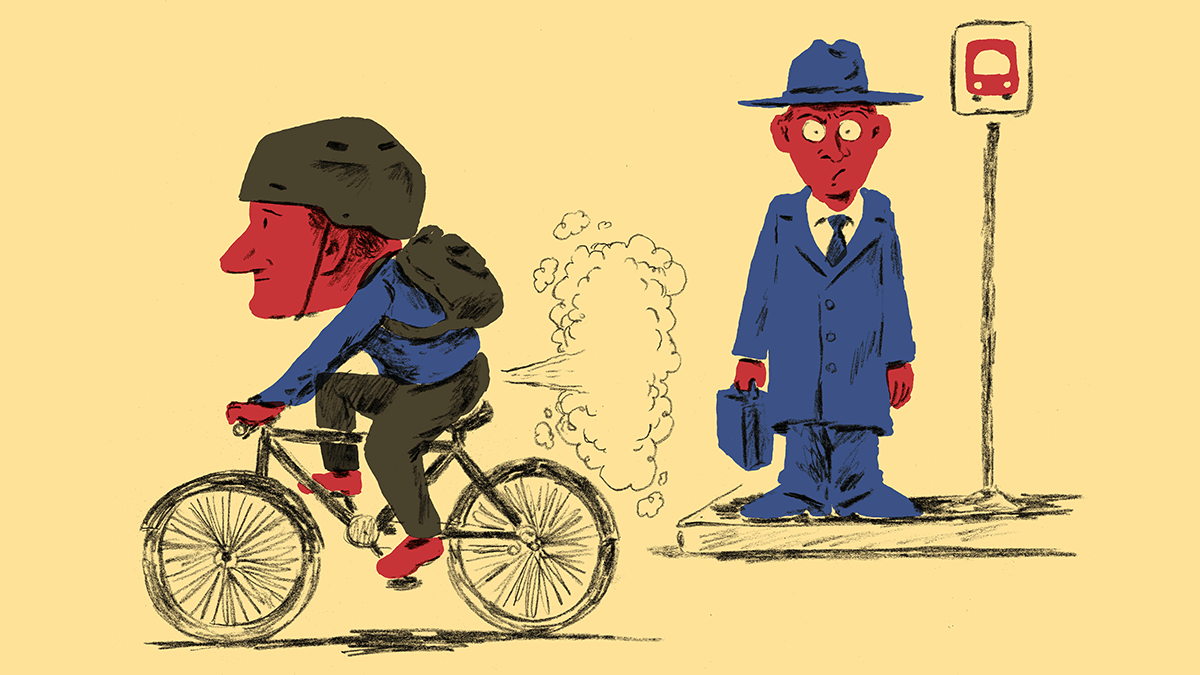There is physics in every fart
Listen Illustration by Steve Teare) " title="bike-gas-2" width="1" height="1"/>
Illustration by Steve Teare) " title="bike-gas-2" width="1" height="1"/>
What's the science behind a toot? (Illustration by Steve Teare)
A huge misconception in the world of flatulence is that when you toot, your butt cheeks are to blame for the noise. Not necessarily.
Basically the noise factor has to do with three things. First—volume, the amount of gas you pass. Second—force, how strongly the gas is pushed out. Third, the size of the hole the gas rushes through, that hole is, of course, the one we expel waste from, the hole in our rumps.
The whoopee-cushion noise comes from the end of the digestive track – that opening of your rear-end. When a lot of gas is pushed out of that tiny opening in short order, it vibrates the tissue. Vibrations create sound waves. In this case, when the opening of your bum vibrates, it goes ‘pfft.’
Farting isn’t too different from playing a brass instrument. With a tuba, for instance, to make a sound, you have to press your lips tightly together and blow air through the opening of the instrument. When you blow the same amount of air through the opening with super tight lips, the sound changes.
The same principle applies to flatulence. Pass just a little gas, and the sound changes again. Sometimes we try to let gas out slowly, that’s a different sonic experience.
But if we break wind, when we are more relaxed, it’s like the sound a tuba player makes when his lips are more relaxed. Lower, deeper. And if you let her rip when you’re really relaxed? Pretty much silent.
WHYY is your source for fact-based, in-depth journalism and information. As a nonprofit organization, we rely on financial support from readers like you. Please give today.



